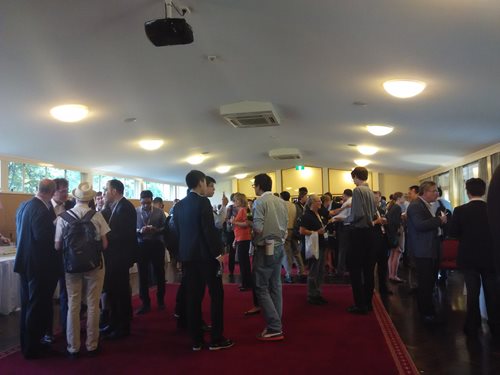Day One of the Light, Energy and Environment Congress
Day One of the Light, Energy and Environment Congress
Baohua Jia
Day one was a busy and exciting day. There were so many things happening. Four parallel sessions were up running. Many interesting talks were given from government officials, vice chancellor of Australian National University, famous professors and early career researchers about the energy issues and using the advanced photonics technology in solving the energy and environment challenges. I met lots of old friends, who previously worked in other sectors of photonics but now moved to the renewable energy sector. I also met lots of new friends and found a couple of researchers working in the very interesting complementary areas that I was planning to move to. After a few chats during the Congress reception a number of collaboration projects were already being planned.

Image: Professor Kenneth Baldwin from Australian National University, Australia is opening the Congress
Here in the followings I would like to share with you the talks/topics that I enjoyed the most and some highlights of the social activities.
Silicon-perovskite tandem cells within reach?
In the opening plenary talk Professor Martin Green from the University of New South Wales provided a very comprehensive talk on the development trends for different energy format. He pointed out compared to other renewable energy sources, solar energy will be the main source from 2020 or 2030. He also showed the efficiency roadmap for the main stream silicon solar cells by analysing the potential of stacking new materials including the recent efficiency breaker perovskites to reach new record. It is exciting to hear that Professor Green is heading a new four-year research program working on the silicon and perovskite tandem solar cells. By integrating a thin layer of perovskite with 18% efficiency, the new tandem cells is expected to lift the current world record for crystalline silicon solar cells from 25% to 30%. This sounds simple integration is not trivial at all. The key challenges of stability, toxicity and scalability of perovskite solar cells have to be tackled first. Challenging but given the huge potential of the new tandem cells, this technology might be one of the most promising technologies that we can put hope on. I look forward to witnessing any new progress along the line.
Black silicon in action
There were three talks in a row about black silicon/silicon nanowire solar cells. Black silicon is micro/nanostructured silicon that can achieve almost zero reflection over broadband solar spectrum due to the superior antireflection and light trapping properties. It has been redeemed as one of the most promising technologies for ultrahigh efficiency solar cells since the reflection loss can be minimised. However, progress has been hindered for a while due to the demanding requirements of passivation given the fact that the surface area of black silicon is tremendous. Exciting results were shown in today’s talk. Effective passivation has been achieved pushing the efficiency of this type of solar cells to 19.8%. Further progress breaking the efficiency limit is on the way.
We had a reunion!
In addition to the scientific aspects, conference is a perfect time to meet old friends and know new friends. This OSA Light, Energy and the Environment Congress provides me the opportunity to meet several of my colleagues, who I have known for years but have never met before. Enjoyable enough, I also met several of our alumni from the Nankai University. We certainly had a good time together.
Nice chat about women in science
During the conference reception, I had a nice chat with one of the leading woman researchers in Australia about career development. We both acknowledge the challenges we are facing and shared the difficulties and successful experience we had. It was really a beneficial chat, which I learnt a lot.

Image: People are enjoying the Congress reception
